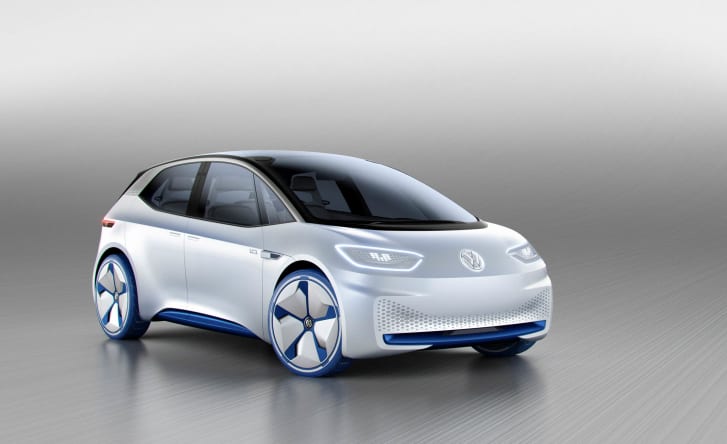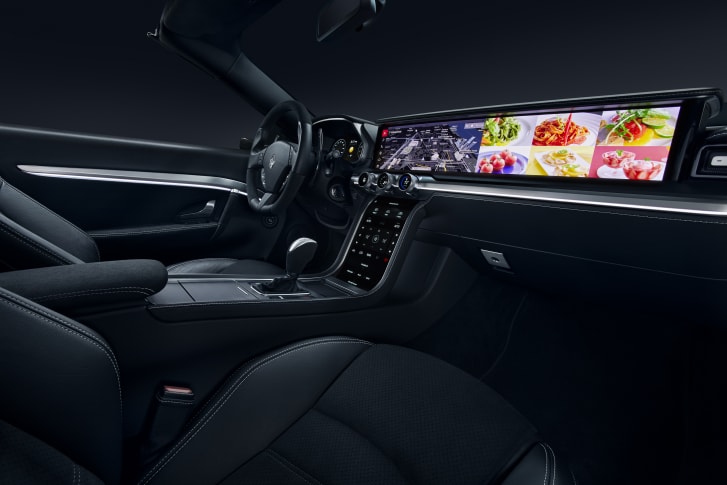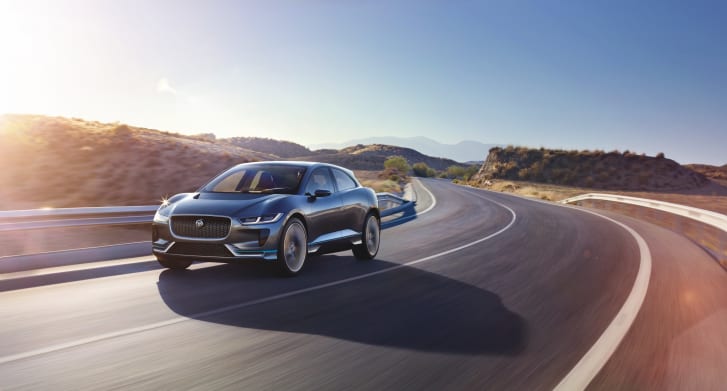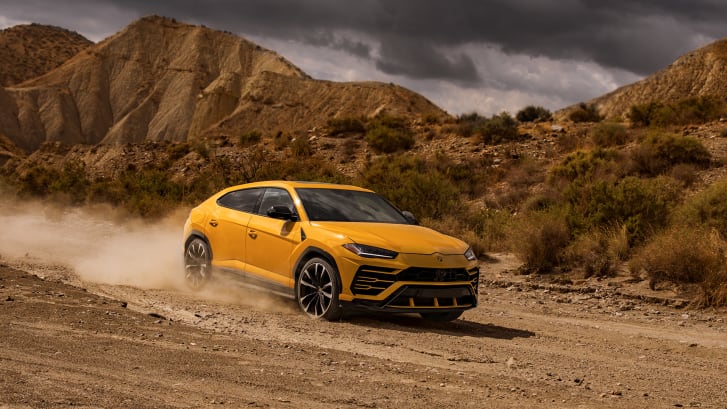Let's get a few things straight, shall we? When 2018 comes to a close, the world's cars will still have four wheels. The vast majority of them will still be powered by combustion engines. And they'll all still have steering wheels. Sorry to disappoint, but it had to be said.
Even so, the coming 12 months are likely to showcase just how dynamic the global car industry is at present -- in technology, innovation and design.
Global executives may not like the influences they so witheringly call "disruptors" -- everything from environmental concerns to AI processing power that can cope with autonomous driving -- but these forces are pulling car manufacturers in half a dozen different directions.
It may be some time before we know which path is best. But 2018 should give us an idea of who's betting on which outcome.
Electric goes mainstream
This should be the year when electric vehicles finally move beyond being a left-field choice to become featured products in the glossy brochures of mainstream manufacturers.
This, in turn, will bring considerable changes in technology and design. There is a school of thought that says eco-cars have to focus entirely on aerodynamics, slipping as efficiently as possible through the air to eke every mile out of the electric (or petrol-electric) powertrain. That's why, for example, the Toyota Prius and Hyundai Ioniq have such similar side profiles.
This, in turn, will bring considerable changes in technology and design. There is a school of thought that says eco-cars have to focus entirely on aerodynamics, slipping as efficiently as possible through the air to eke every mile out of the electric (or petrol-electric) powertrain. That's why, for example, the Toyota Prius and Hyundai Ioniq have such similar side profiles.
But from this point on, there's going to be such diversification in the world of electric vehicles that car manufacturers will be battling to grab their own slice of the market -- and that means we'll see big jumps in design.
Related:
How Chinese start-ups are disrupting the electric supercar market
This year, for example, we should get a first glimpse at production versions of the Volkswagen I.D. and Mercedes EQ Concept. The former is a family hatchback that's about the same size as a Golf but much bigger inside, thanks to a chassis specifically designed to take advantage of the absence of a combustion engine.
Volkswagen's I.D. concept is a prime example; its production version, expected to make a public debut within the next 12 months, is said to be about the same length as the company's Golf hatchback but offer the same cabin space as the larger Passat saloon. This will become an increasingly common trait.
Volkswagen's I.D. concept is a prime example; its production version, expected to make a public debut within the next 12 months, is said to be about the same length as the company's Golf hatchback but offer the same cabin space as the larger Passat saloon. This will become an increasingly common trait. Credit: Courtesy of Volkswagen
The same benefits should apply to the Mercedes, an SUV that will have desperately short overhangs at the front and rear ends. Such designs reflect the growing trend for simple surfacing along a car's flanks, with no fussy creases or spoilers.
Both cars are expected to closely resemble the concept cars that preceded them (although the VW is tipped to lose some of its more radical features, such as headlights that can "wink" at other road users and pedestrians). Small wonder that those who've already seen the VW and Merc say they have the potential to decimate the waiting list for Elon Musk's Tesla Model 3 in a matter of weeks.
Related:
This new virtual reality tool could transform how we design cars
Dynamic displays
Cabins are also likely to evolve at an unusually rapid rate over the next 12 months. With brands putting increasing amounts of functionality through touchscreens, we're likely to see fewer switches.
In many cases, manufacturers will do away with physical instrument gauges completely in favor of high-res displays. This tech isn't exactly new, but the popularity of cars that have adopted it is likely to push rivals into following suit over the next two years.
Harman's concept dashboard uses a 28-inch QLED widescreen display - although it can slide down into the fascia for a more subtle "strip screen" effect when it's not needed.
Harman's concept dashboard uses a 28-inch QLED widescreen display - although it can slide down into the fascia for a more subtle "strip screen" effect when it's not needed. Credit: Courtesy of Harman International
Indeed, at the recent Consumer Electronics Show in Las Vegas, one of the industry's key technology suppliers, Harman (now owned by Samsung), showcased a spectacular multi-screen arrangement in a modified Maserati. As well as bringing ultra-sharp QLED technology to vehicles, the design demonstrated how the displays can fit into a cockpit in a subtle, sophisticated fashion.
Related:
Electric vehicles are changing the way we make cars
The firm is already in talks about bringing the concept to production, meaning that we could see it in a show car this year ahead of an arrival in showrooms by 2019.
Autonomy beckons
Of course, the elephant in the room for car designers is autonomous driving. Sadly, 2018 won't bring the sort of "brain-off" level of vehicle self-awareness that would remove the need to see out of the windscreen altogether.
But you can bet that design teams will spend the next 12 months thinking about how vehicles can keep us entertained in the free time autonomous driving will hand back to us.
Expect to see concept cars featuring revised seating positions, for example, allowing occupants to turn around and talk to each other. Multiple displays -- even those in the door panels -- will encourage interaction with everything from social media to streamed entertainment. And we're likely to see further experimentation with steering wheels -- what they do when the car is doing the driving, and, perhaps more significantly, how the vehicle can safely hand back control to the driver when needed.
The Jaguar I-Pace is a crucial car for the old British brand, as it tries to grab the environmental high ground over its well-established German rivals.
The Jaguar I-Pace is a crucial car for the old British brand, as it tries to grab the environmental high ground over its well-established German rivals. Credit: Courtesy of Jaguar
Other pieces of the autonomous jigsaw are likely to fall into place, too. Just one vehicle capable of what's officially classified as "Level Three Autonomy" (out of five) is currently on sale -- the Audi A8. And even then, its capabilities are deactivated in many regions because the legislation isn't ready for it. This should improve in 2018, as rule-makers in cities and regions start getting their heads around the technology.
Best of the rest
But beyond concept cars and cutting-edge technology, which of 2018's new models will actually matter most to the market in the short to medium term?
SUVs remain big business, and 2018 will be the year when established supercar brands from Italy join the party. Pictured is the Lamborghini Urus.
SUVs remain big business, and 2018 will be the year when established supercar brands from Italy join the party. Pictured is the Lamborghini Urus. Credit: Courtesy of Lamborghini
First up, we'll get a new version of BMW's big-selling 3 Series executive saloon. And the push towards SUVs won't slow any time soon, with new entries into the market from Alfa Romeo and Lamborghini, not to mention our first look at the previously unimaginable Ferrari SUV. Meanwhile, Europe's best-selling car, the Volkswagen Golf, is likely to enter its eighth generation as the year draws to a close.
But for a car that mixes environmental credentials, cutting-edge design and the potential to transform a brand, it is hard to look beyond the Jaguar I-Pace. This pure-electric crossover is due on sale in the second half of the year, and its design looks set to successfully blend Jaguar's sporting stance with the layout advantages of electrification. This car, more than any, could give 2018 a flavor of what's to come.





No comments:
Post a Comment